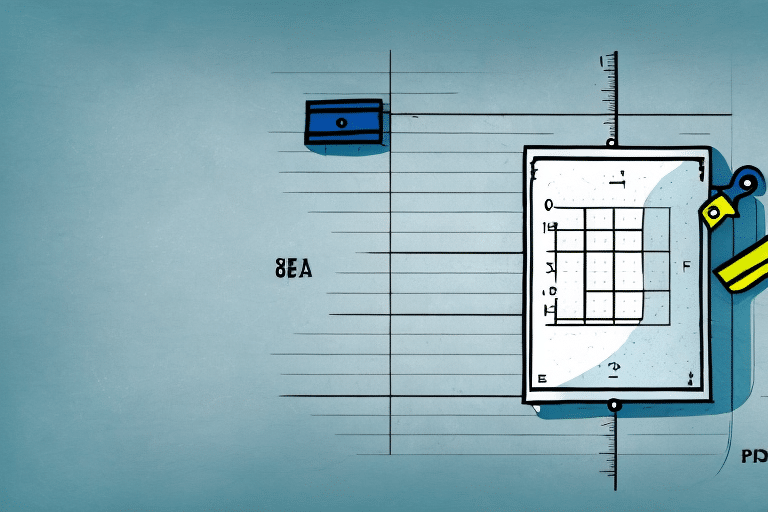Calculating the Girth of a Package
Accurately calculating the girth of a package is essential for anyone involved in the shipping or transportation industry. Miscalculations can lead to extra fees, delays, or even lost packages. In this comprehensive guide, we'll explore the fundamentals of package girth measurement, provide a step-by-step calculation process, and offer valuable tips and industry standards to ensure your shipments are both efficient and cost-effective.
Understanding Package Girth
What is Package Girth?
Package girth is the measurement around the thickest part of a package. It plays a critical role in determining both the shipping cost and the handling requirements of a package. Girth, along with weight and length, helps shipping companies calculate the dimensional weight, which can significantly impact the overall shipping fees.
Why is Girth Important?
Accurate girth measurements ensure that packages comply with shipping company size restrictions, preventing additional fees or rejection of shipments. Moreover, proper girth calculation enhances the safety and security of packages during transit, reducing the risk of damage or loss.
The Importance of Accurate Girth Calculation
Cost Efficiency
Shipping costs are influenced by both the weight and size of a package. By accurately measuring girth, businesses can optimize their shipping strategies to minimize costs. According to a USPS pricing guide, dimensional weight pricing can significantly affect the total shipping cost.
Delivery Timeliness
Packages that exceed size or weight thresholds may require special handling, leading to delays. Ensuring accurate girth measurements helps maintain timely deliveries, enhancing customer satisfaction.
Environmental Impact
Efficient packaging reduces the environmental footprint of shipments. By minimizing excess size and weight, businesses contribute to lower fuel consumption and reduced emissions during transportation.
How to Measure Package Girth
Step-by-Step Girth Calculation
- Identify the Thickest Part: Determine the thickest section of the package, typically the midpoint.
- Wrap the Measuring Tape: Use a flexible measuring tape to encircle the widest part of the package, ensuring it goes over any corners.
- Record the Measurement: Note the girth in inches for accurate calculation and future reference.
Example Calculation
For instance, if a package has a length of 20 inches, a width of 15 inches, and a height of 10 inches, the girth is calculated as follows:
Girth = 2 × (Width + Height) = 2 × (15 + 10) = 50 inches
The total package size can then be calculated by adding the length to the girth:
Total Size = Length + Girth = 20 + 50 = 70 inches
Common Mistakes to Avoid
- Measuring the Wrong Part: Ensure you measure the thickest part of the package.
- Ignoring Corners: Always measure over the corners to get the true girth.
- Not Including Packaging Material: Consider the thickness of packaging materials in your measurements.
- Inconsistent Measurement Techniques: Use a consistent method to avoid discrepancies.
Tools and Technology for Measuring Girth
Essential Tools
The primary tool required for measuring girth is a flexible measuring tape. Ensure it is durable and long enough to wrap around larger packages.
Advanced Technologies
For businesses handling high volumes of shipments, technology can streamline the girth measurement process. Automated systems and integrated software solutions can quickly calculate girth and dimensional weight, enhancing accuracy and efficiency.
Some shipping scales come with built-in girth measurement features, automatically calculating both weight and size for seamless processing.
Industry Standards and Guidelines
Shipping Company Requirements
Different shipping companies have varying size and girth restrictions. For example, FedEx and USPS provide detailed guidelines on maximum girth and size limits. It's crucial to familiarize yourself with these standards to ensure compliance and avoid unexpected charges.
Standard Girth Limits
Typically, the maximum girth for standard shipping is around 130 inches combined with the length, but this can vary. Always refer to the specific policies of the shipping provider you are using.
Benefits of Accurate Girth Measurement
Cost Savings
Accurate girth measurements can lead to significant cost savings by preventing overcharges based on incorrect size estimations. Businesses can optimize packaging to stay within standard size limits, reducing the need for premium shipping rates.
Improved Efficiency
Properly measured packages move through the shipping process more efficiently, reducing handling time and minimizing the risk of delays.
Enhanced Customer Satisfaction
Timely and safe delivery of packages fosters trust and satisfaction among customers, leading to repeat business and positive reviews.
Conclusion
Mastering the art of calculating package girth is a vital component of effective shipping and logistics management. By understanding what girth is, why it matters, and how to measure it accurately, businesses can optimize their shipping processes, save on costs, and ensure that packages reach their destination safely and on time. Implement these best practices and utilize the right tools to enhance your shipping operations and support your business growth.




















